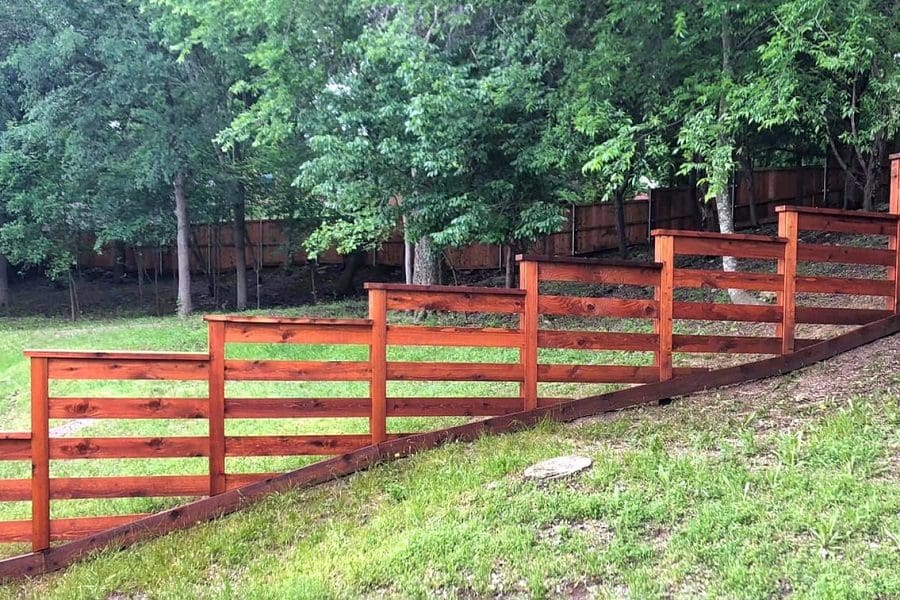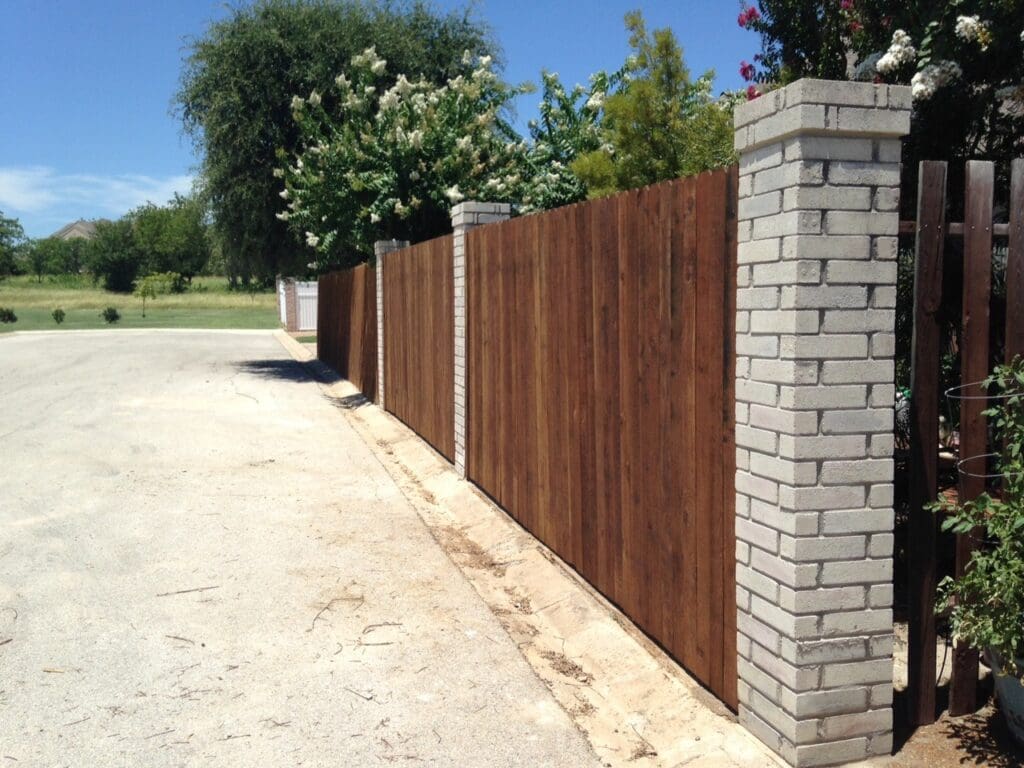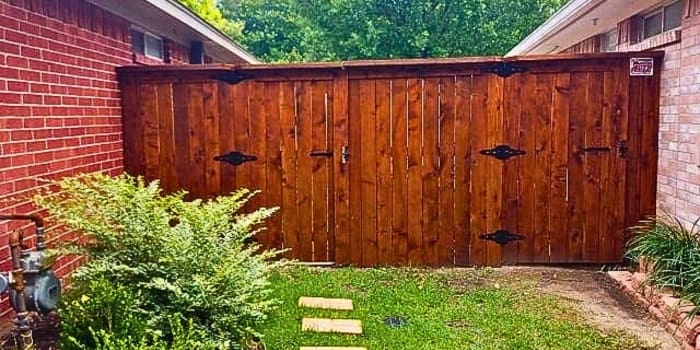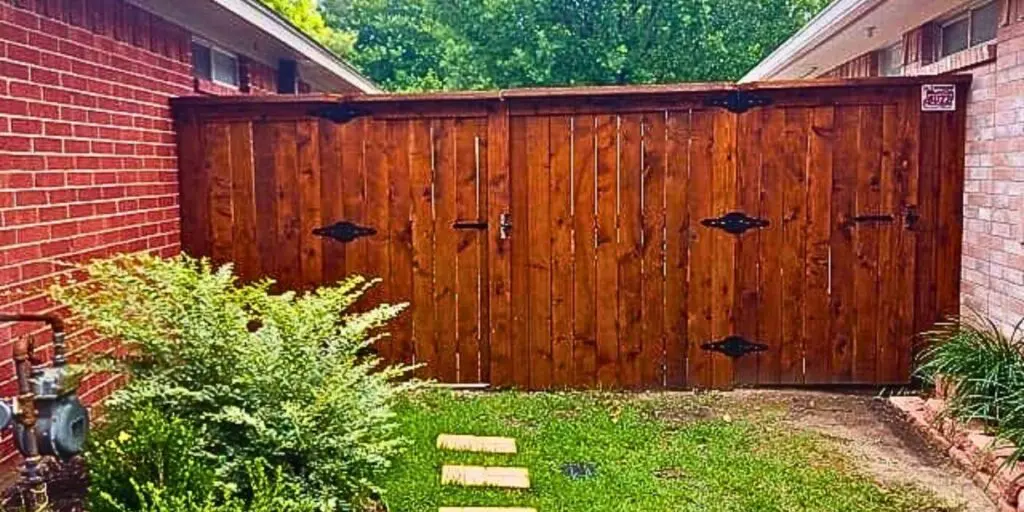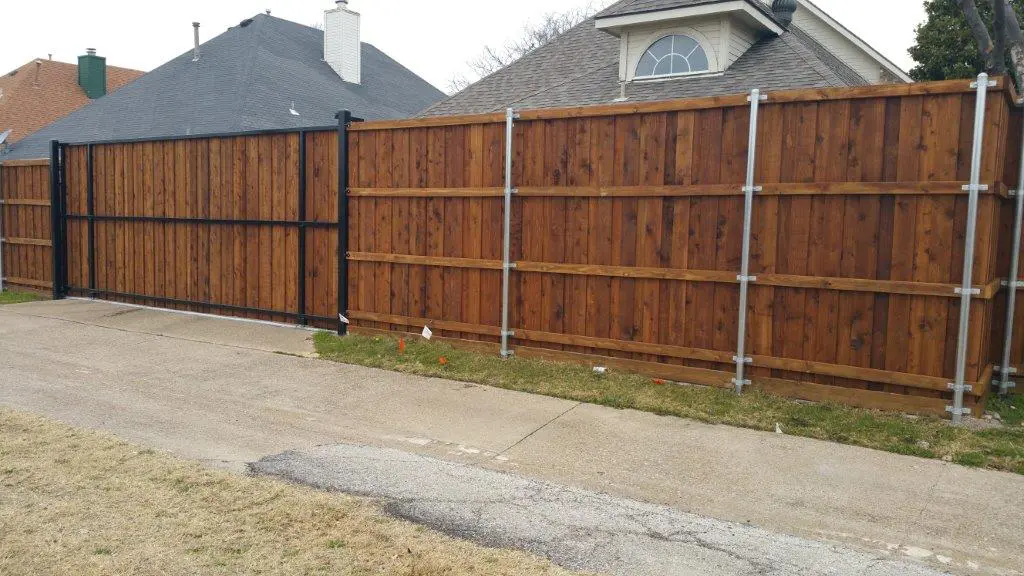Picking the right fence for your Fort Worth home? It’s a bigger decision than just “what looks nice.” The vinyl vs wood fence debate isn’t just about appearance; it’s about finding something that can handle the heat, the wind, and the occasional Texas-sized storm, all while looking good and not draining your wallet.
In Fort Worth, summers are hot, storms can blow in fast, and clay-heavy soil shifts with seasonal moisture. Your fence will face intense sun, high winds, and the risk of termite activity year-round. That’s why it’s essential to choose a fence that not only looks great but is also built to last in local conditions.
In this guide, we’ll walk through the pros and cons of vinyl vs wood fences, what they cost, how much work they take to maintain, and what to know about HOA rules, plus insider tips specifically for Fort Worth homeowners. By the end, you’ll have the clarity to choose a fence that matches your property, budget, and lifestyle.
How Fort Worth’s Climate Impacts Vinyl vs Wood Fence Performance
Fort Worth’s climate delivers a unique mix of UV-heavy summers, clay soil that shifts, and high termite risk. Vinyl fences are naturally resistant to rot, moisture, and insects, making them a low-maintenance choice. Wood fences, especially cedar, can perform well if regularly sealed and installed with deep, reinforced posts.
Did you know Fort Worth is in the highest termite activity zone in the U.S.? Vinyl is naturally termite-resistant, while wood needs consistent inspections and preventative treatments.
Expansive clay soil expands when wet and contracts when dry, which can cause posts to become misaligned. Vinyl’s slight flexibility can reduce breakage in windy conditions, but wood’s rigidity transfers more stress into the post base. In both cases, the quality of the installation is critical.
Tips to help your fence last in Fort Worth:
- Use post footings at least 2–3 feet deep with solid concrete bracing
- Keep wood pickets from touching soil
- Choose UV-protected vinyl to reduce sun fading
Cost Comparison: Upfront vs Long-Term
At installation, wood fences are usually cheaper, averaging $23–$42 per linear foot in Fort Worth. Vinyl fences typically run $30–$55 per foot, depending on style. Over time, the vinyl vs wood fence cost per linear foot can change dramatically.
Wood requires staining or sealing every 2–3 years and occasional picket replacements. Vinyl needs only occasional washing. Over a decade, vinyl often wins in 10-year total cost of ownership, especially for larger properties.
Here’s one thing homeowners often overlook: in Fort Worth, deeper post holes and extra concrete for clay soil add costs. It costs a bit more upfront, but it’s worth it to keep your fence from leaning or shifting later.
Maintenance and Longevity
If you love the natural beauty of cedar, just know it needs a little extra care over the years. That means staining or sealing every 2–3 years, inspecting for warped boards, and ensuring sprinklers don’t constantly wet the fence base. With proper upkeep, wood fences in Fort Worth can last 15–20 years.
Vinyl’s routine is simpler. A rinse with a garden hose or gentle pressure wash once or twice a year keeps it looking clean. Modern vinyl can last 20–35 years with minimal maintenance, even under the intense Texas sun.
Pro tip: In shady or humid areas, monitor vinyl for mildew buildup. And if you’ve got wood, a UV-protective coating will help keep the color from fading too fast in the sun.
Appearance, Style, and HOA Rules
When you’re deciding between vinyl and wood, aesthetics often ends up being the dealbreaker. Wood offers rich grain, warm tones, and flexible staining options, ideal for traditional or rustic homes. Vinyl delivers a clean, consistent look that stays uniform for decades, with newer designs that mimic wood textures.
HOA rules in Fort Worth can be strict, often dictating fence material, height, and color. Vinyl may be limited to whites or tans, while wood may require certain board styles or trim.
Did you know many HOAs require the “finished” side of the fence to face outward? Submitting material and style specifications early can save weeks of approval time.
Durability, Repairs, and ROI
Vinyl’s flexibility helps it withstand wind, while its moisture resistance prevents rot. However, replacing a damaged vinyl panel can be pricier than replacing a few wood boards. Wood is simpler to repair in small areas but requires more frequent attention to maintain strength.
According to Texas Fence, wood fencing can provide up to 60% ROI when selling a home, while vinyl averages 30–40%. Buyers weigh both curb appeal and anticipated maintenance costs when evaluating a property.
Quick Takeaways
- Climate and soil in Fort Worth demand careful material choice and professional installation.
- Vinyl fences cost more upfront but save money over time with low maintenance.
- Wood fences are more affordable initially but require regular sealing and repairs.
- HOA rules can limit material, color, and height; always confirm before ordering.
- ROI can favor wood for resale, but vinyl appeals to buyers seeking low upkeep.
Conclusion
Whether you choose vinyl or wood, your fence should align with your property’s needs, your budget, and your long-term maintenance preferences. In Fort Worth, where the sun, storms, and soil can all affect performance, installation quality is just as important as material selection.
If you want a low-maintenance, pest-resistant, and long-lasting option, vinyl is a smart investment. But if you prefer the warmth and customization of natural wood and are willing to maintain it, cedar can provide decades of beauty.
Get a custom Fort Worth fence plan and estimate from BuzzFence to make an informed choice that will look great and last for years. Visit our Contact Page to schedule a consultation today.
FAQs: Vinyl vs Wood Fence in Fort Worth
How long does a vinyl fence last in North Texas heat?
You can expect a vinyl fence to last 20–35 years, with 25 years being a common lifespan estimate, especially when installed correctly and washed annually. Modern vinyl includes UV protection to fight fading even in Fort Worth’s intense sun.
What’s the 10-year total cost of ownership comparing wood vs vinyl fence in Fort Worth?
While wood typically costs less upfront, vinyl’s low maintenance can make it more cost-effective over 10 years, especially for larger properties.
Is vinyl or wood better for termite resistance in Fort Worth?
In termite-heavy North Texas, vinyl is naturally termite-resistant, making it a strong choice for reducing ongoing repair risks. Wood must be treated and kept away from soil contact.
How often should I clean a vinyl fence to keep it looking new?
Clean your vinyl fence once or twice a year with a hose, mild soap, or a gentle pressure wash to maintain appearance and prevent mildew.
Do HOA rules in Fort Worth favor wood or vinyl fencing?
Many HOAs regulate fence materials and colors. Vinyl is often limited to neutral tones, while wood offers more customization. Always submit your plans before installation.
References
- Texas Fence – Vinyl vs Wood Fences: Pros, Cons, and Cost (https://texasfence.com/vinyl-vs-wood-fences/)
- HowToLookAtAHouse.com – What is the Average Life Expectancy of a Vinyl Fence? (https://www.howtolookatahouse.com/Blog/Entries/2020/5/what-is-the-average-life-expectancy-of-a-vinyl-fence.html)
- Better Homes & Gardens – How to Clean a Vinyl Fence (https://www.bhg.com/how-to-clean-vinyl-fence-8726146)
- Fortress Fence – Choosing Between Wood and Vinyl Fencing (https://fortressinc.ca/choosing-between-wood-and-vinyl-fencing-pros-and-cons/)
- Inline Security Fence – Wood vs Vinyl Fence (https://inlinesecurityfence.com/blog/wood-vs-vinyl-fence/)

